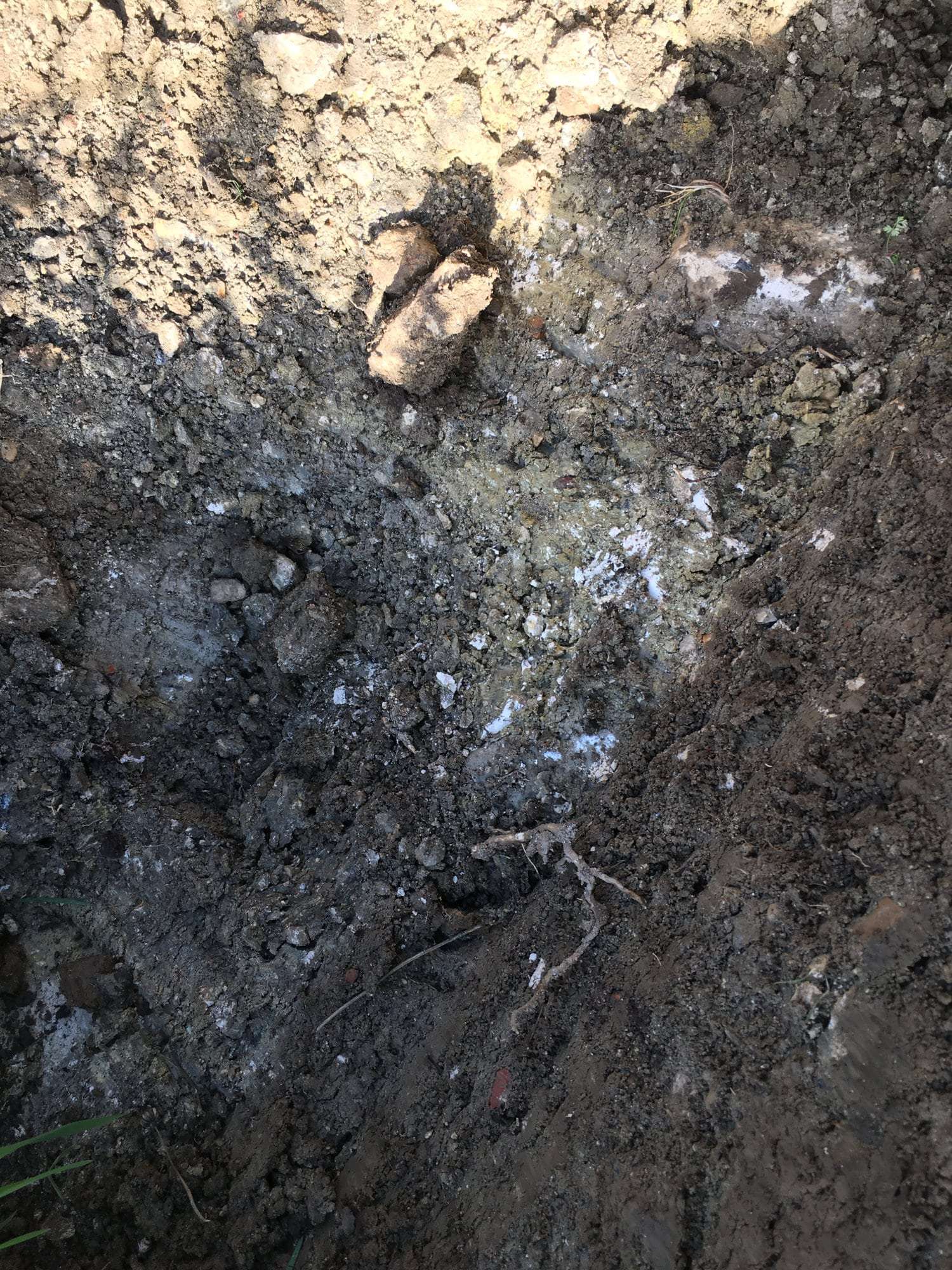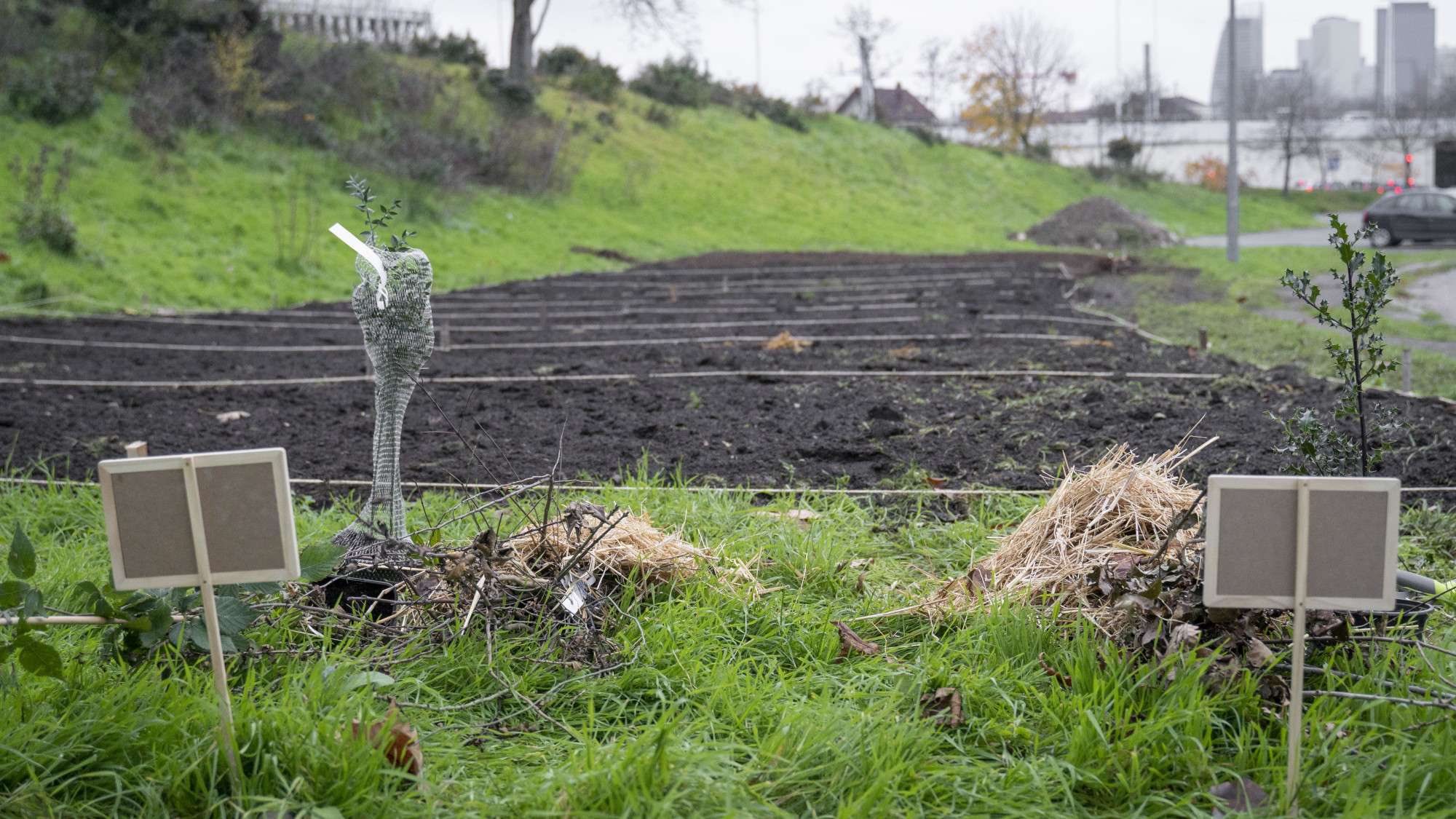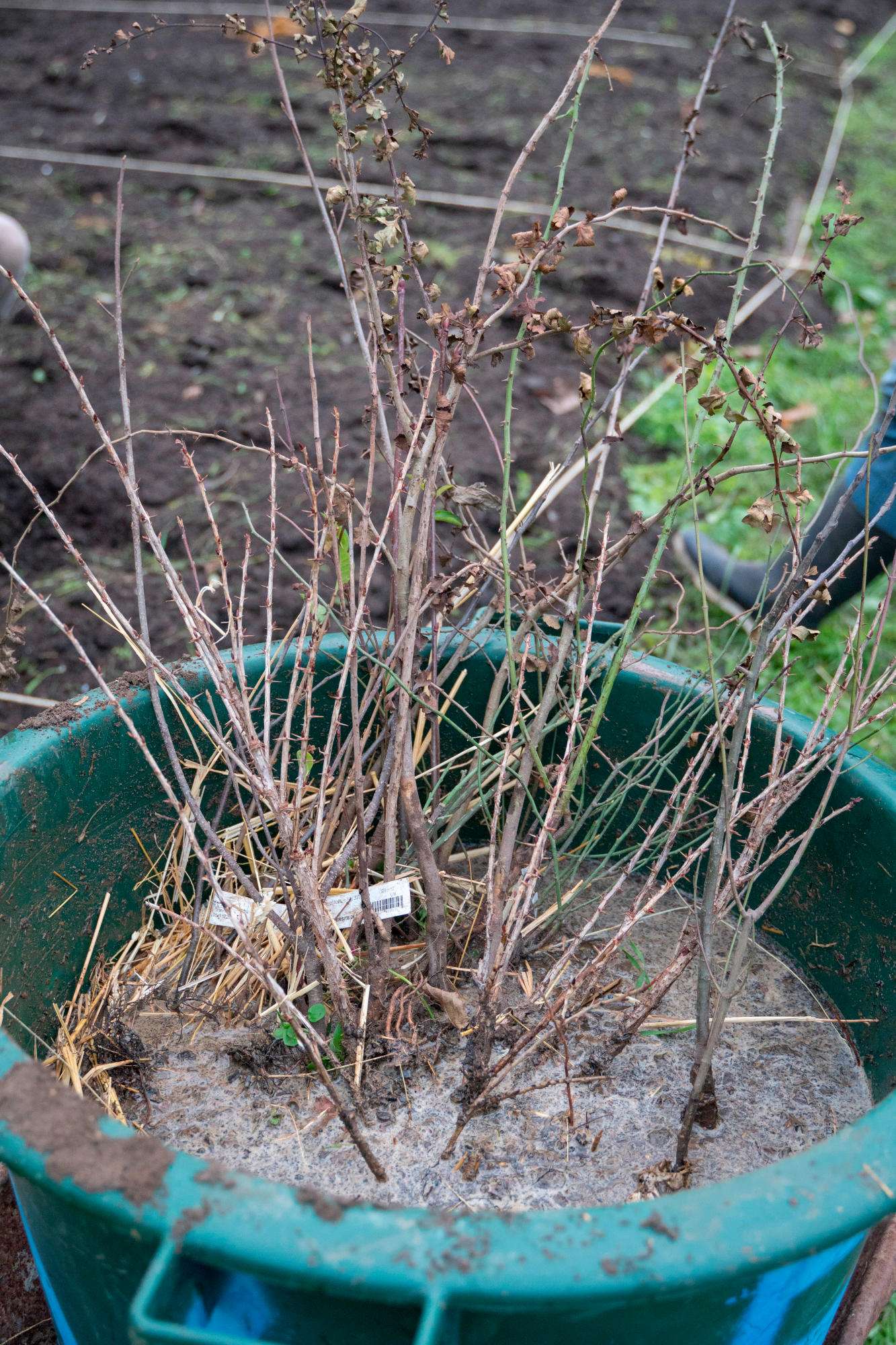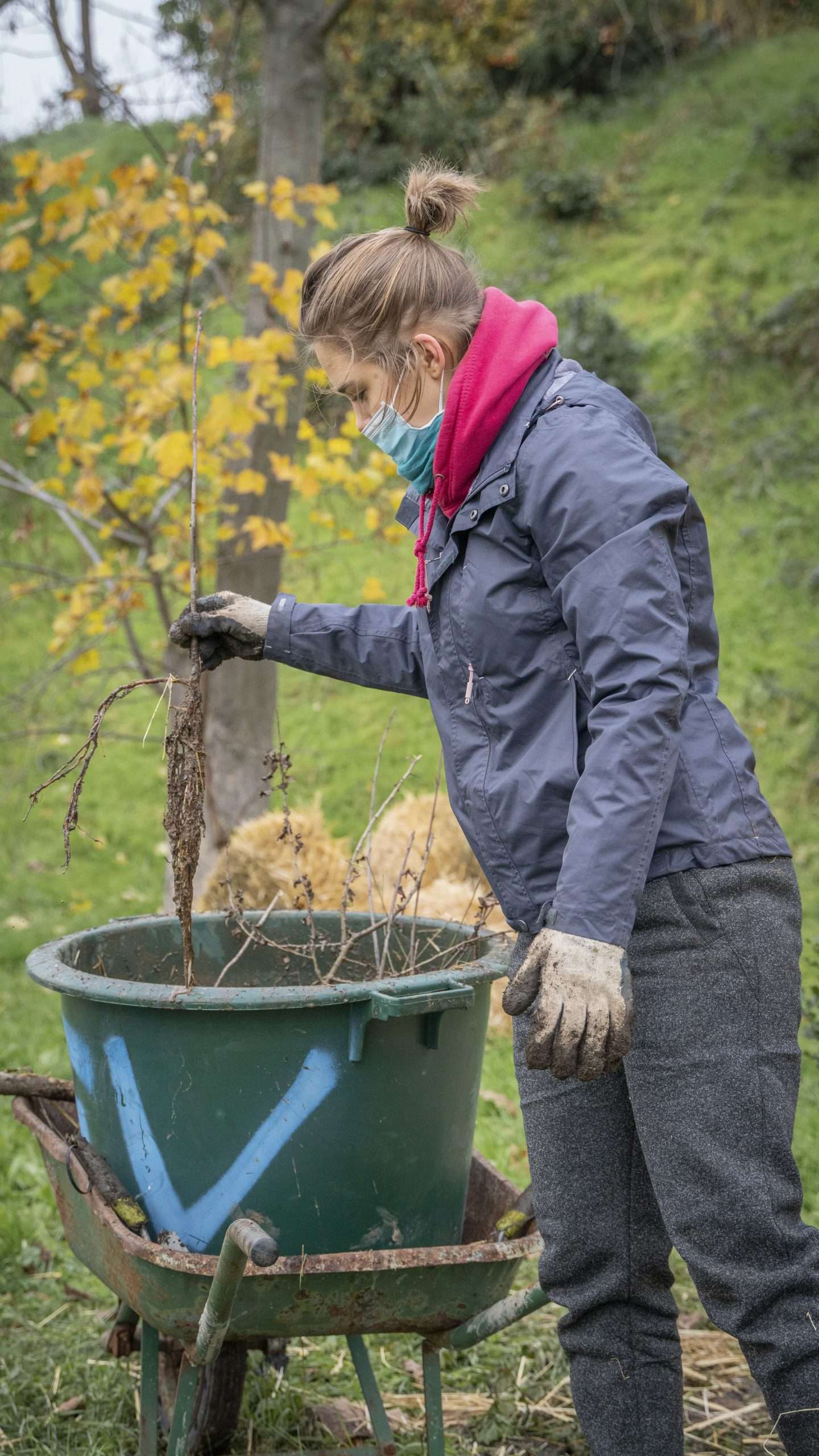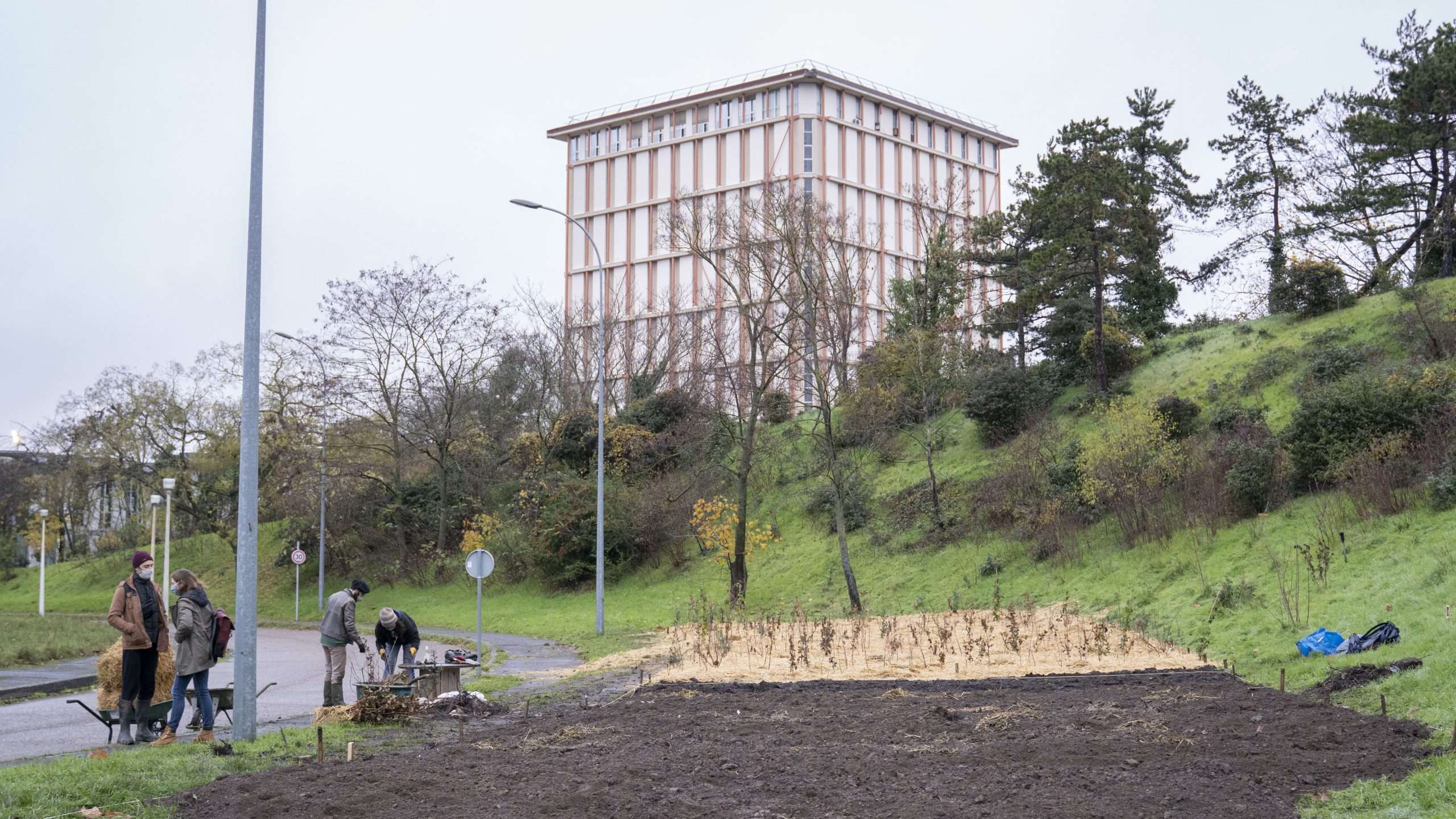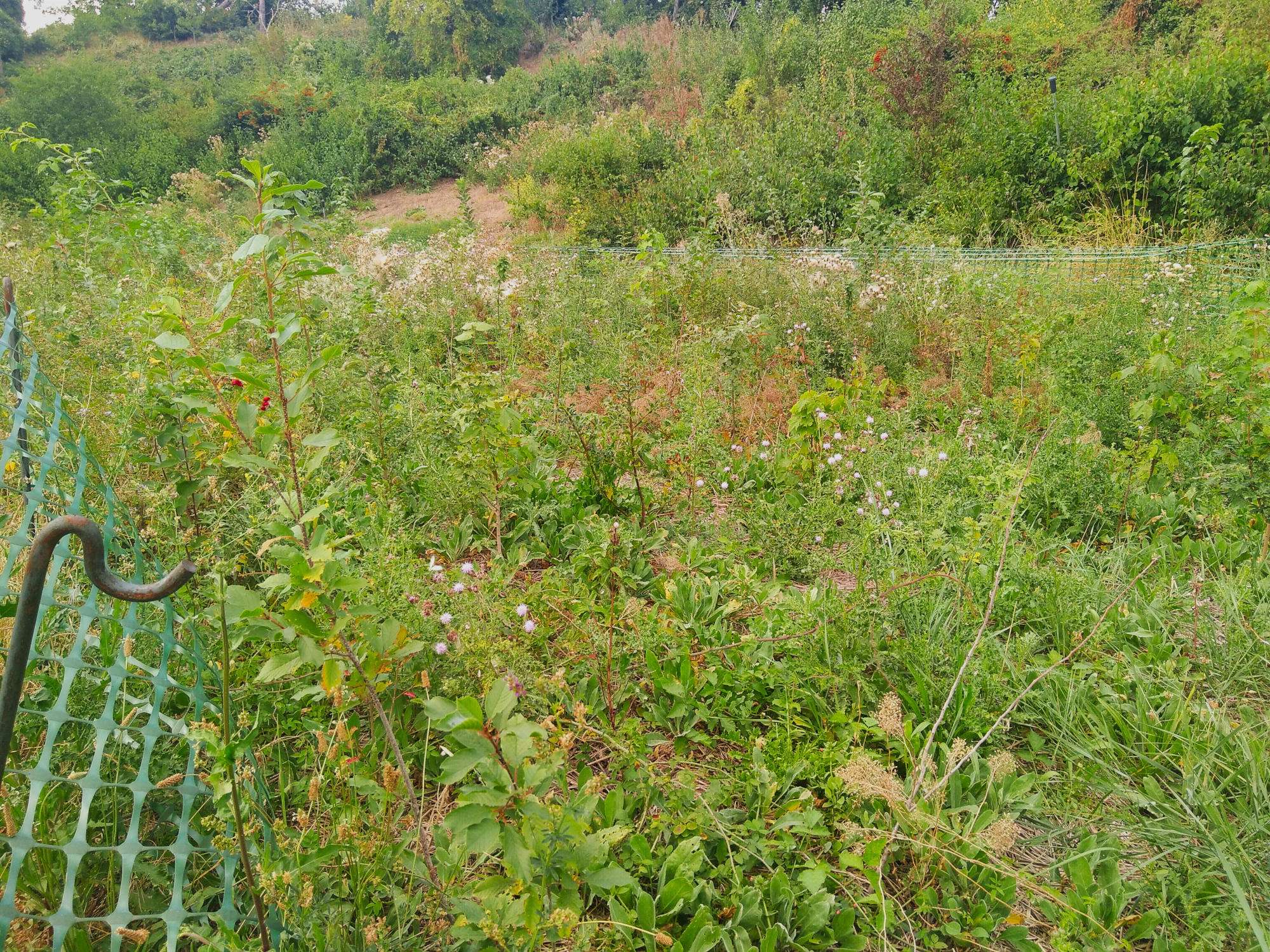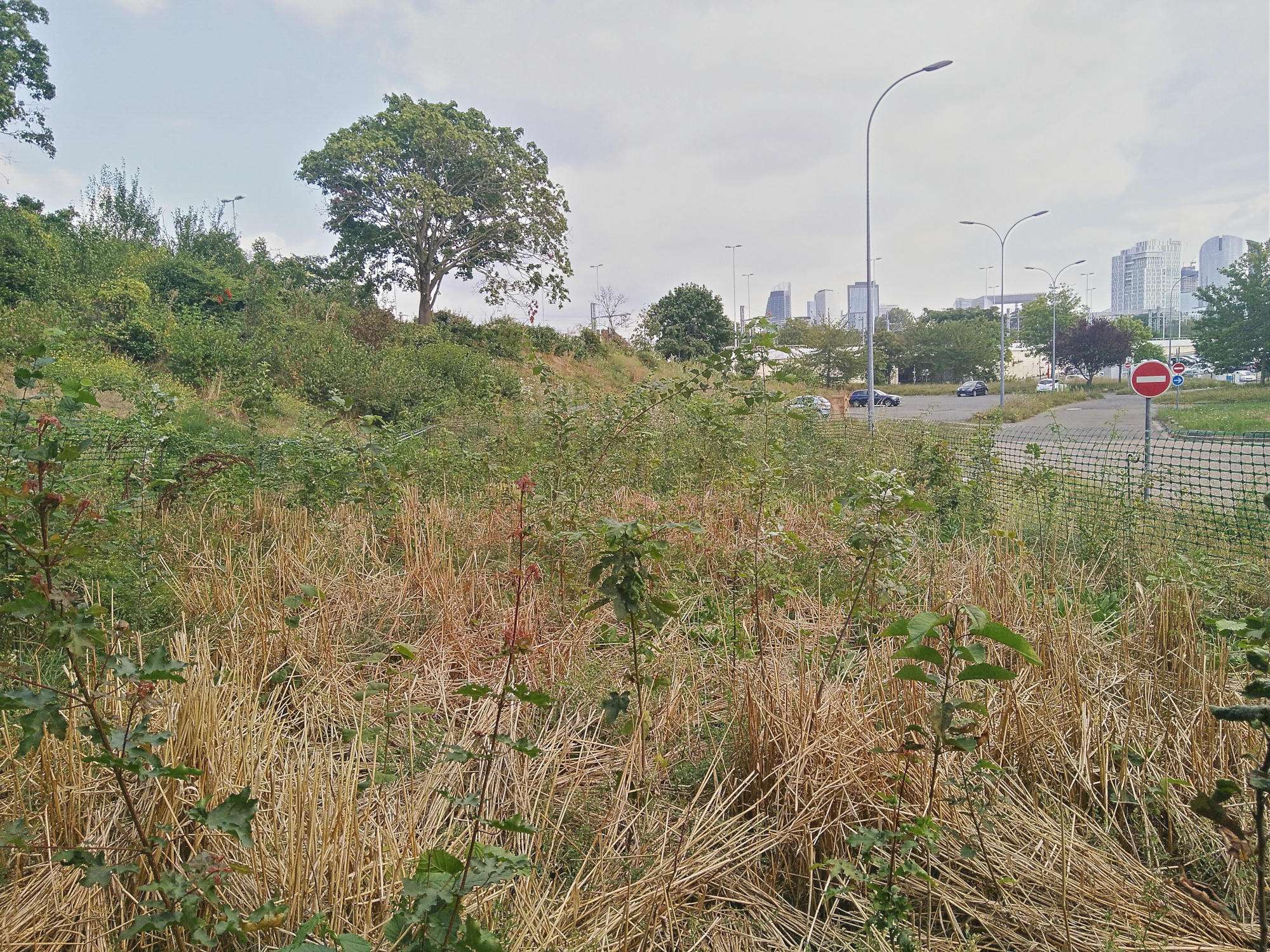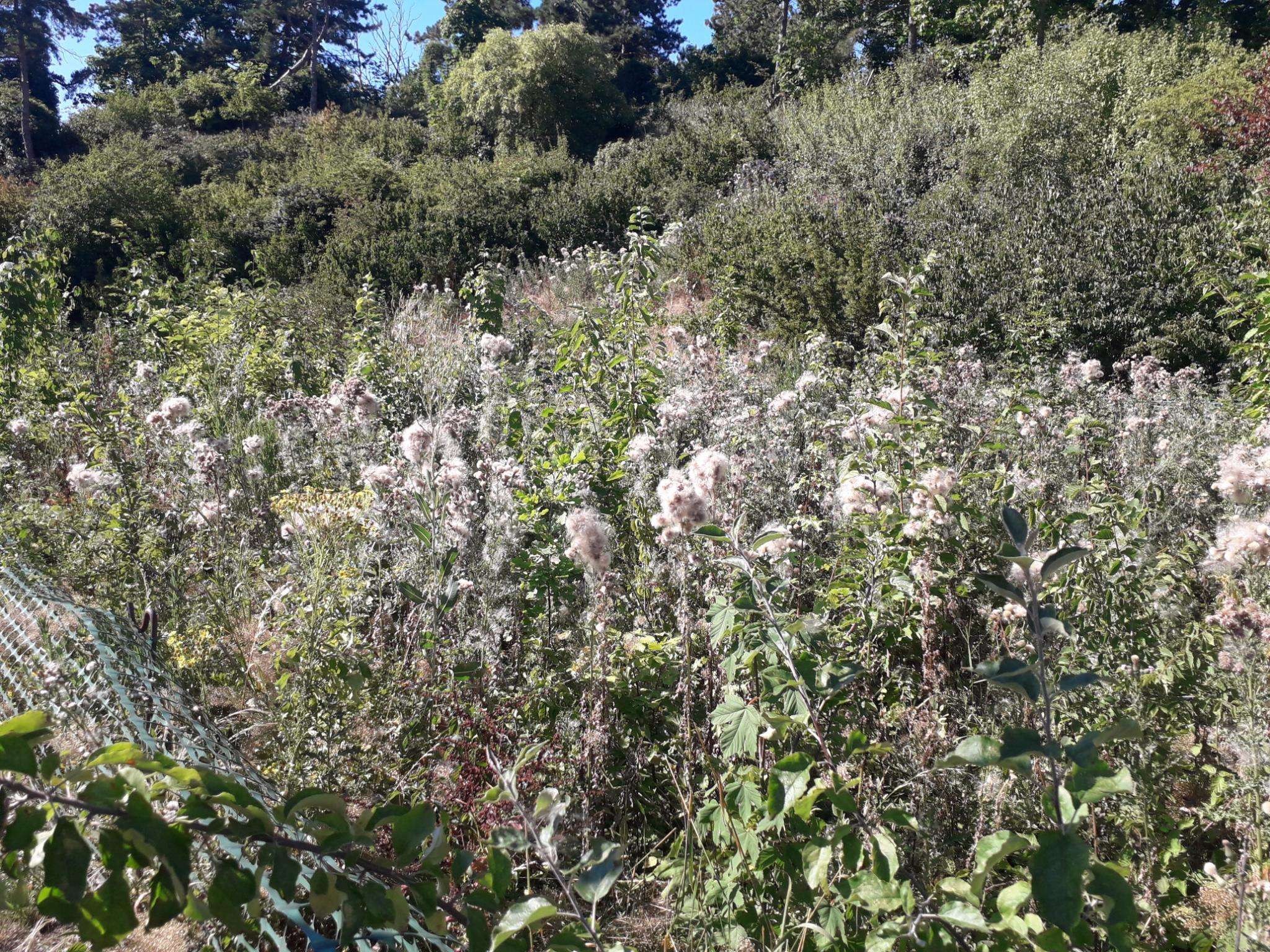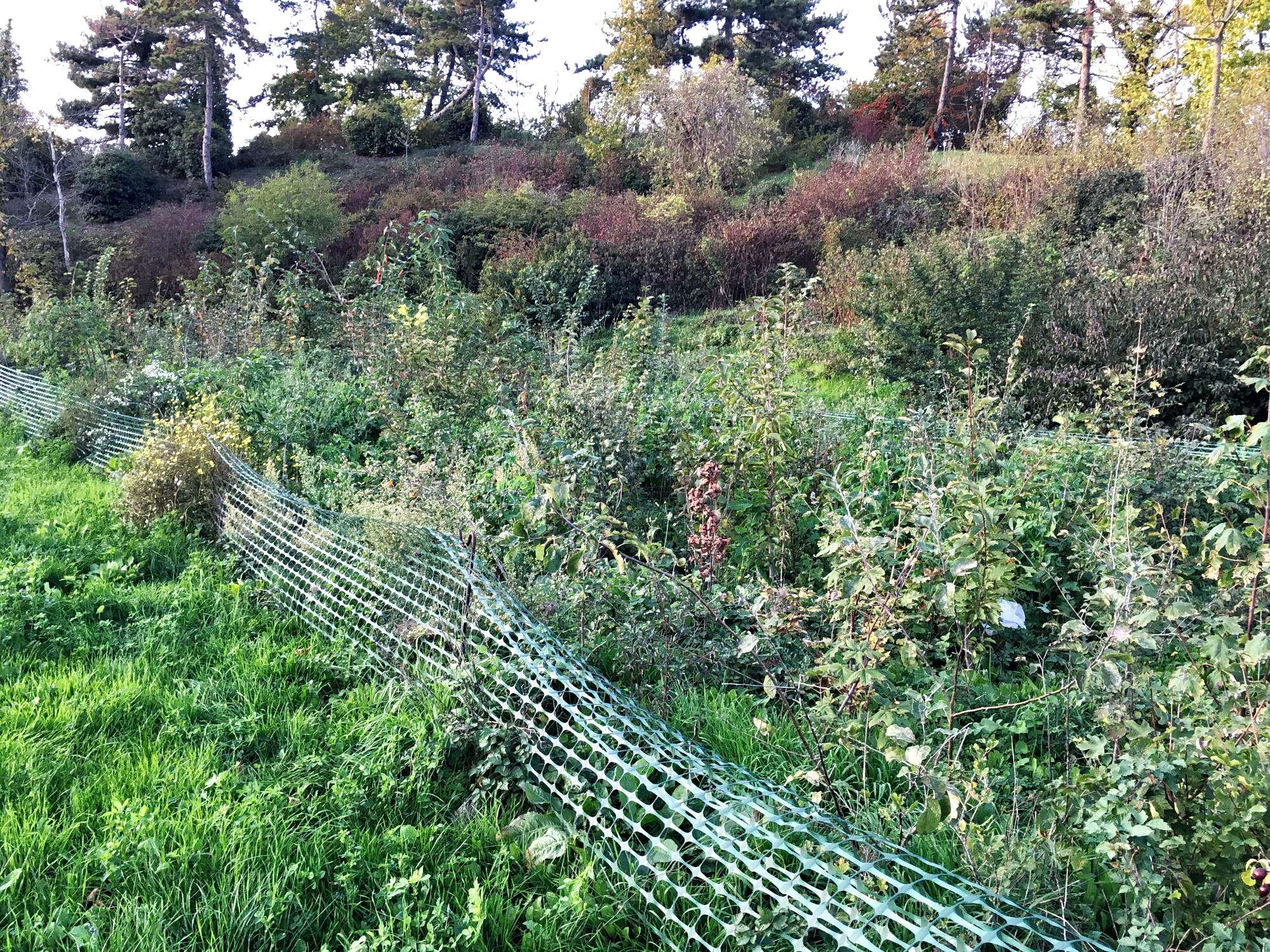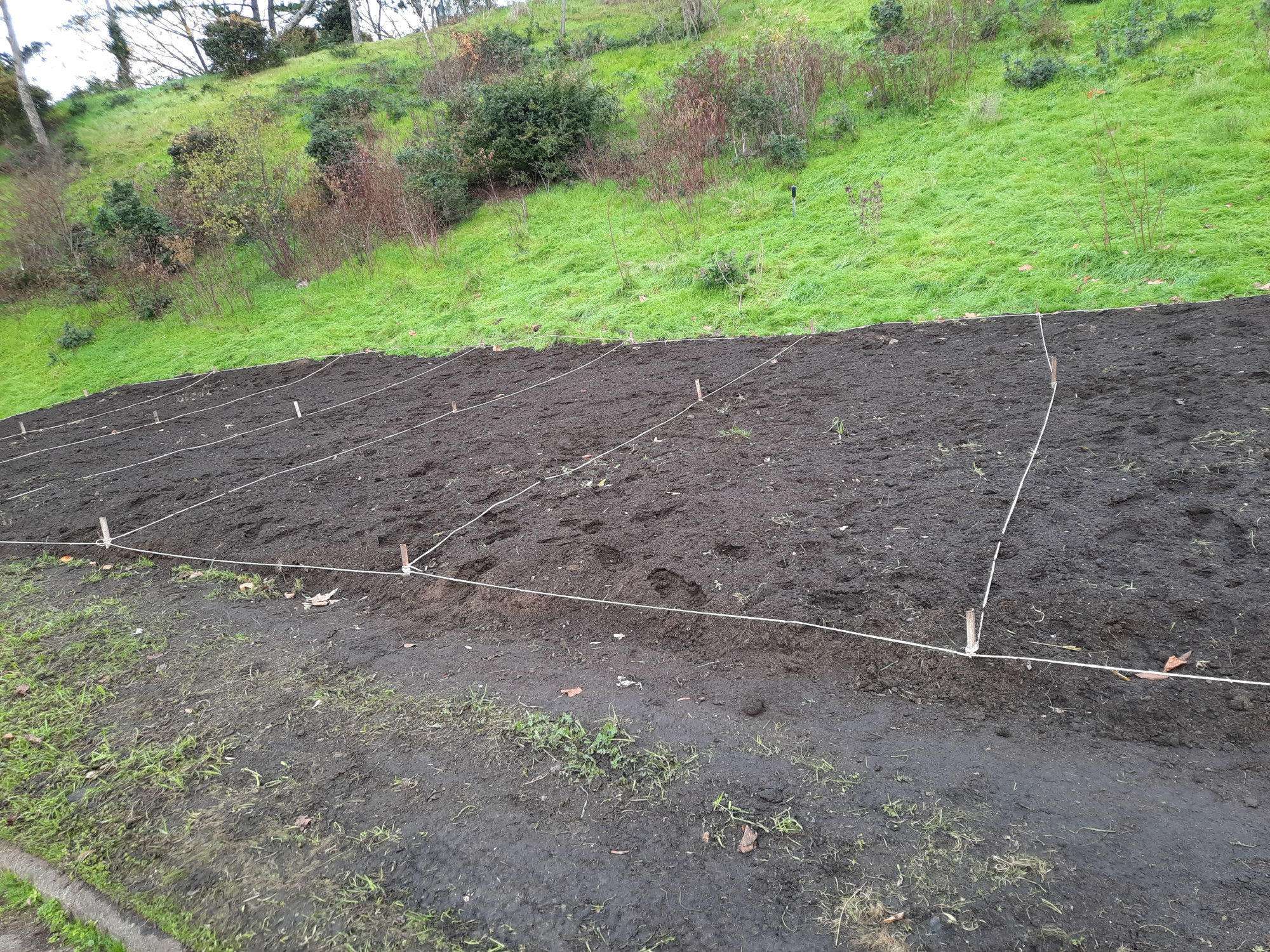
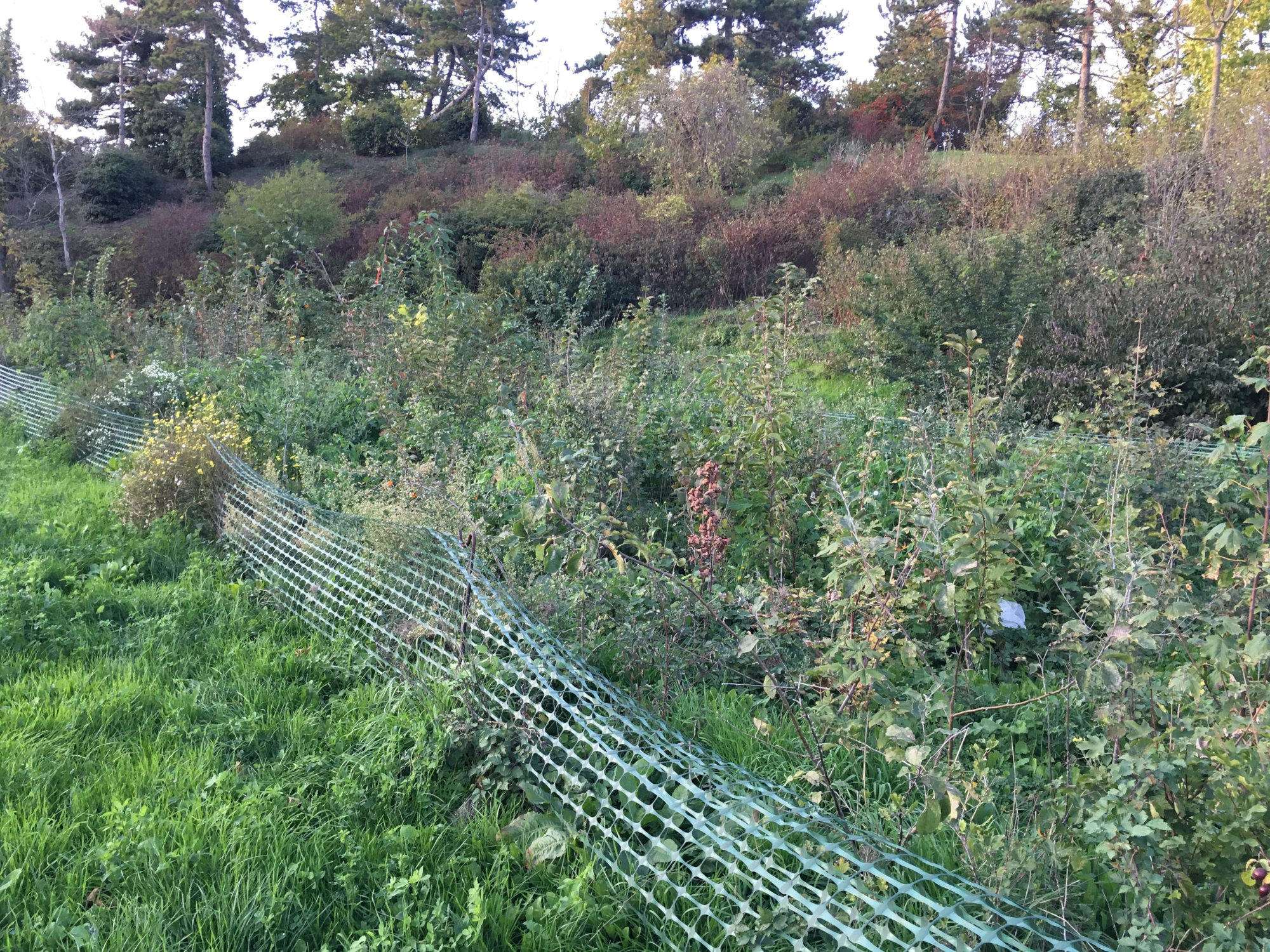
Planting period : december 2020
Planting carried out as part of a three-way partnership, initiated by the student association LABESS: Laboratoire Éthique, Économique, Social & Solidaire, and the University of Nanterre, which financed the project (University Participatory Budget).
The LABESS association’s objective was to experiment with the Miyawaki method to recreate a “nourishing forest” using fruit-bearing plant species, for wildlife and students. Almond trees were included in the species selection, echoing Nanterre’s almond-growing tradition.
The students and the university took over maintenance of the plantation. The period of health crisis and its impact on student life posed new difficulties for this aspect.
Planting site: Nanterre University campus (92)
The plantation is located on the Université de Nanterre campus, in the allée des Arts, behind the CROUS refectory. The site was chosen after considering several options, based on data provided by the university: biodiversity inventory, differentiated management plan for campus green spaces, soil survey reports.
As the soil on the campus is largely composed of backfill excavated during the campus construction period, it was carefully assessed at the planting site itself, in order to assess the quality of the soil conditions and gain a better understanding of the high drainage capacity of the soil at this level, as emphasized by the campus green spaces field agents, who alerted us to the risk of water shortage for the trees.
The plantation is located on the Université de Nanterre campus, in the allée des Arts, behind the CROUS refectory. The site was chosen after considering several options, based on data provided by the university: biodiversity inventory, differentiated management plan for campus green spaces, soil survey reports.

























GPS coordinates : 48.90485, 2.21745
The planting in pictures
Before planting: site preparation
Click on images to see the caption
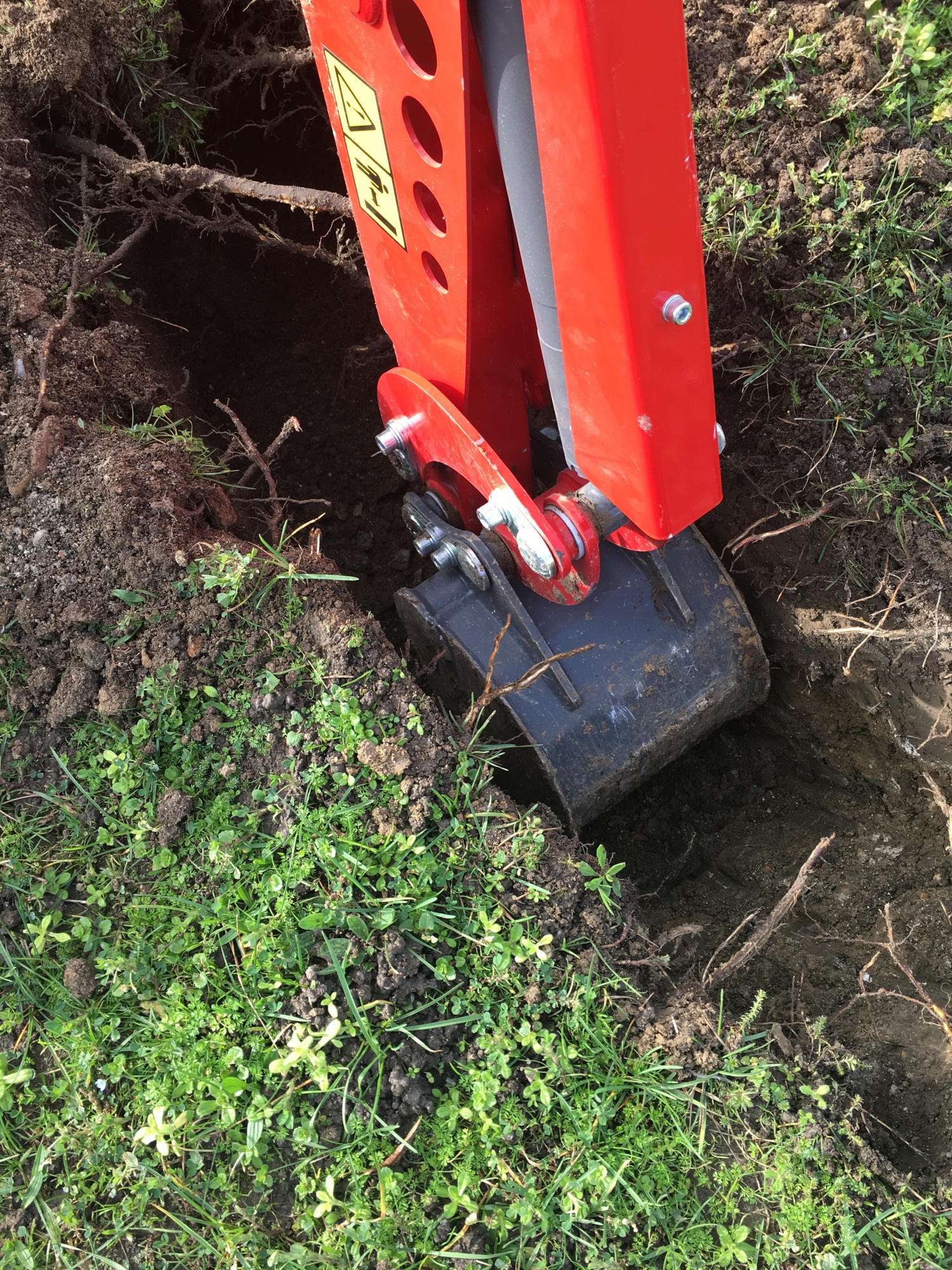
Knowing the history of the planting area is essential. Following discussions with the campus green space agents, we learn that the soil is very mineral, derived from earth fill dating back to the various campus constructions. We asked them to dig pits one metre deep (with a mini-excavator) to check that there were no slabs, water or electricity networks, and to assess the porosity of the soil.
Planting in December 2020
Click on images to see the caption
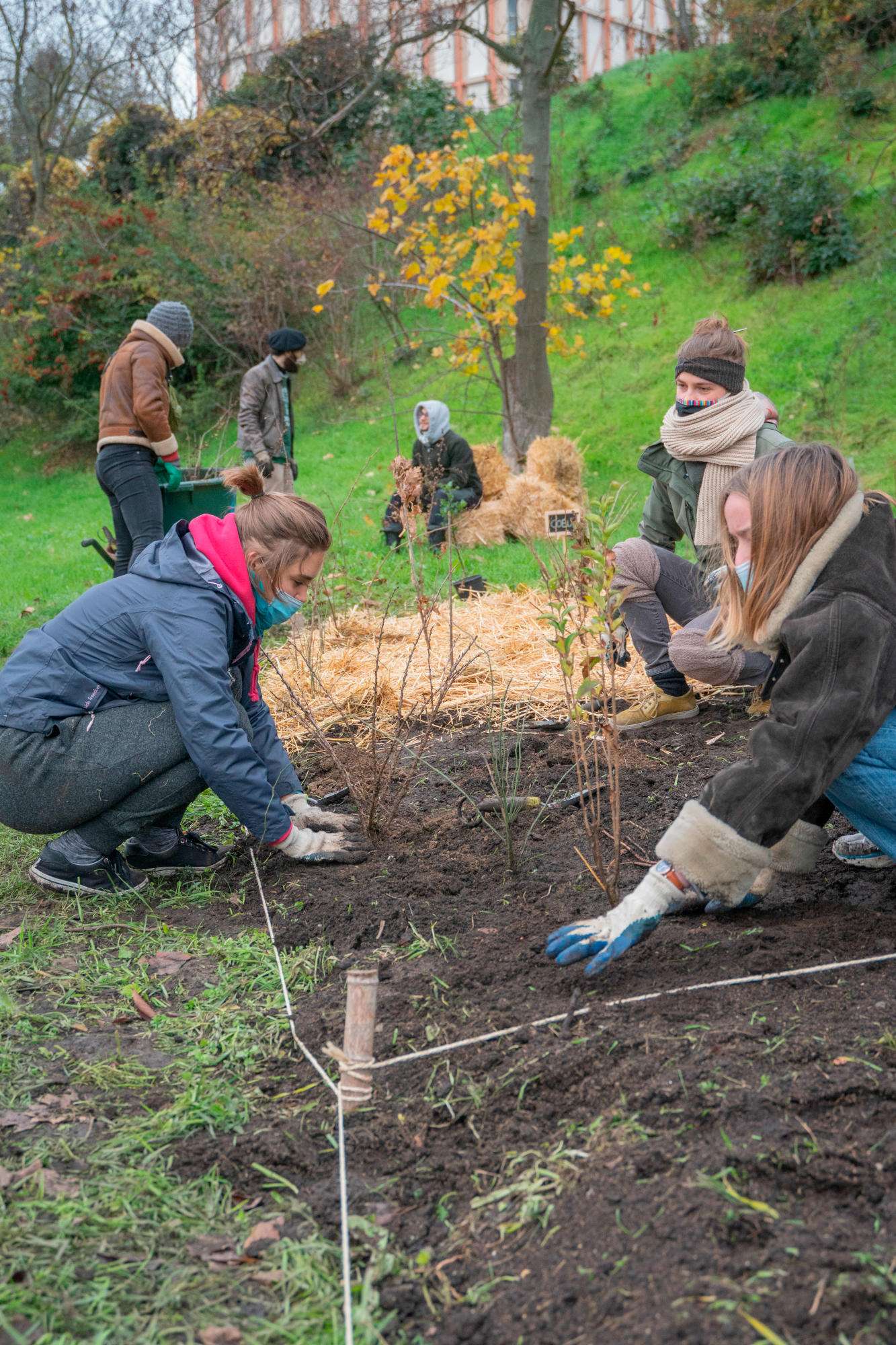
Here we go!
Photo ©Claire SERIE
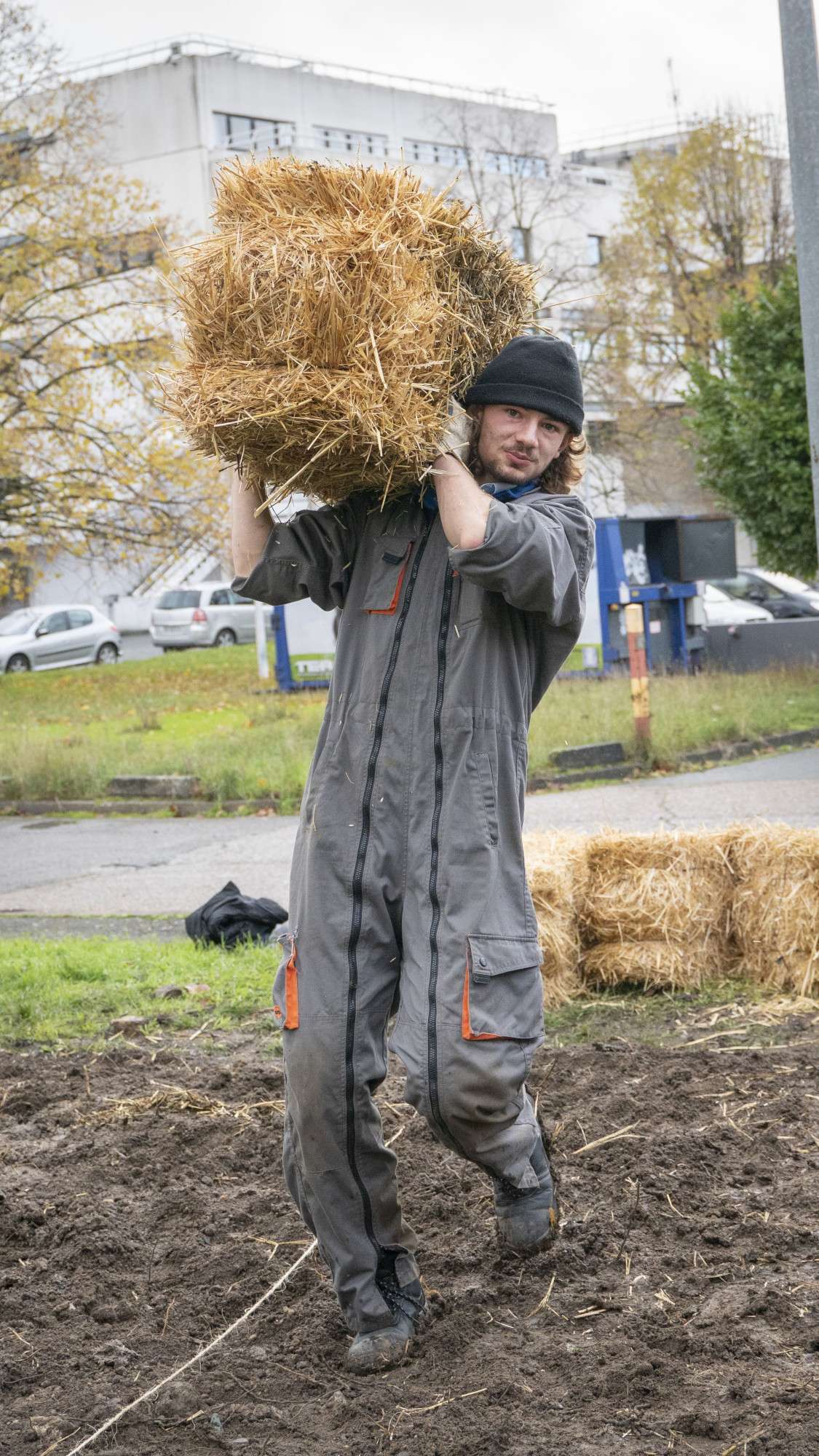
Second day of planting: the students are still going strong and enjoying the exercise!
Photo ©Claire SERIE
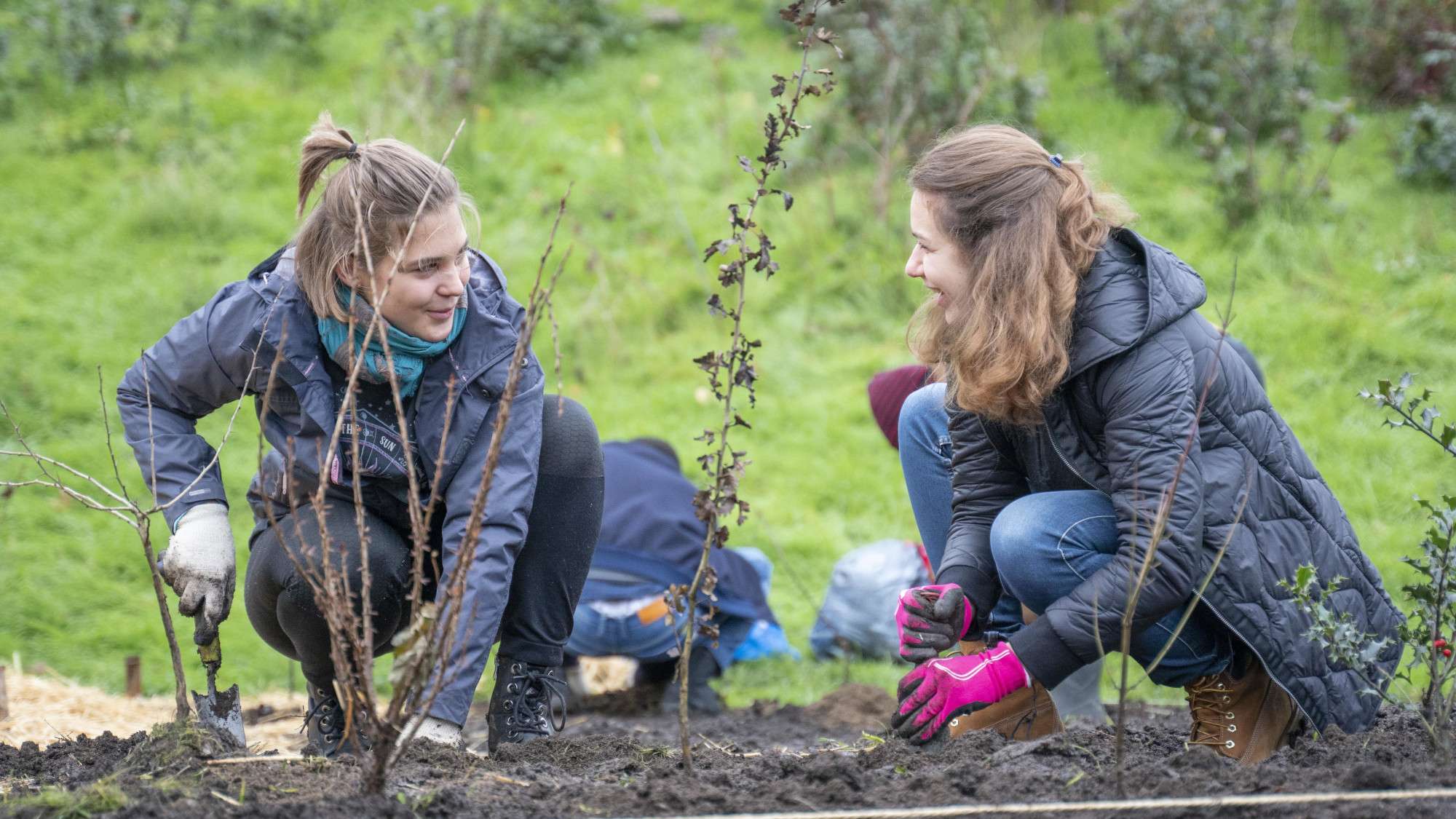
We can’t stress this enough: a plantation is a place where people meet and exchange ideas! The joy on people’s faces is a very important indicator for both organizers and participants, in our opinion
Photo ©Claire SERIE
